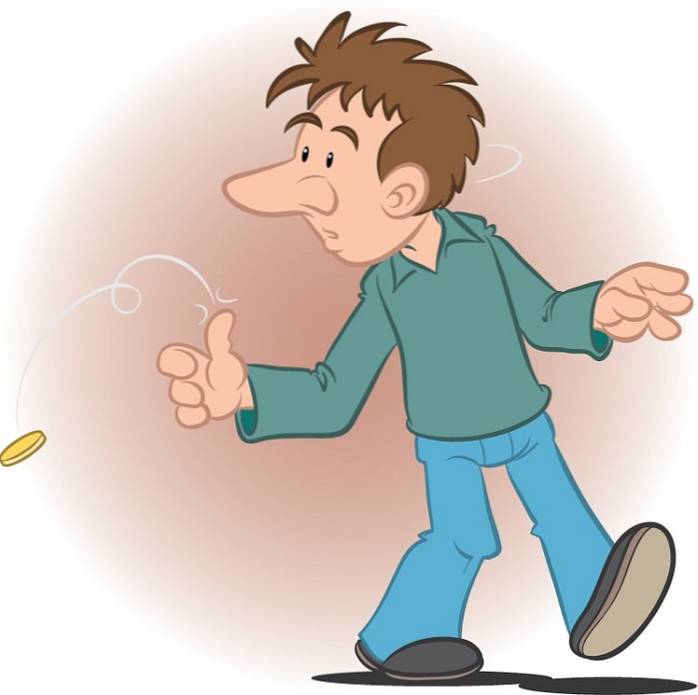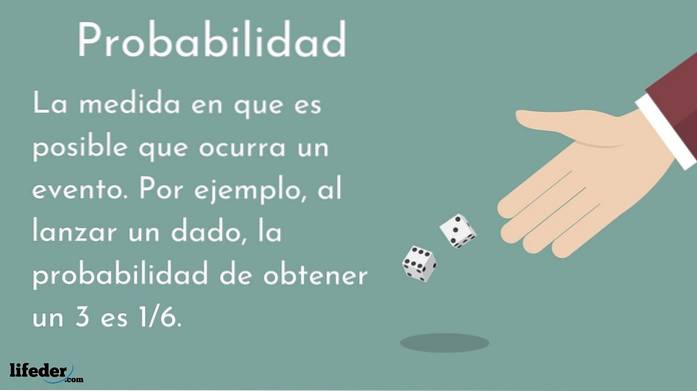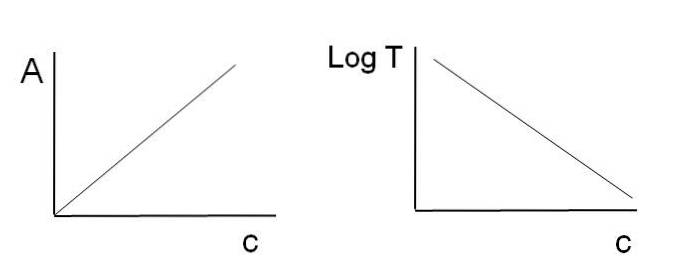
Probability

What is probability?
The probability, Mathematically speaking, the occurrence of a certain event is the extent to which that event is predictable. For example, if it is cloudy, it is common to ask what is the probability that it will rain?
Giving the answer to this question by means of a numerical value is not easy, because it depends on many factors. However, an expert who has dedicated himself to studying the climate in detail can estimate, from his experience, the probability of rain if the day is cloudy..
It is somewhat different when it comes to events with less conditioning factors, such as the toss of an honest coin, which is one in which the probability of either side coming up is the same.
In this experiment there are only two alternative outcomes: heads or tails, so, in an honest coin, the probability of a heads is ½ and the probability of tails is also ½.
The odds are different on a die, which is a cube with six faces numbered 1 to 6. The probability of getting a 3 in a single roll is easily calculated: it is 1/6. However, this technique does not apply to the calculation of the probability of rain, for which a different approach is required, since they are different types of probability.
The theory of probabilities is a branch of Mathematics that has its origin in games of chance, a very popular entertainment among people of all times. There is archaeological evidence that shows that 40,000 years ago or even more, humans already used dice to pass the time, as well as in religious ceremonies.
Types of probability
It is clear that there are different interpretations of probability according to the situation. In this way you have the probabilities:
Frequentist probability
To calculate it, it is necessary to carry out a large number of experiments and record the frequency with which a certain event occurs, called the absolute frequency. The probability is the relative frequency or quotient between the number of times the event appears and the total number of experiments performed.
This type of probability is also called posterior probability.
Classical probability
If an event can occur from n different forms, equally probable and exclusive (meaning that if it occurs in one way, it cannot occur in another), the classical probability is the quotient between the number of cases favorable to the event in question and the total number of possible cases.
This type of probability is known as a priori probability.
Objective probability
Probability that is calculated using a previously established criterion, which is independent of the analyst's opinion. The objective probability can be theoretical or experimental as well.
Probability teoric
Its value is determined based on reasoning and knowing all the possibilities in which an event can occur, assuming that all of them are equally probable.
Probability experimental
It is calculated by the record of a particular experiment and its results. The experiment is carried out a certain number of times n, and one event, among the several that can occur, appears m times. Therefore, the probability of occurrence of said event is the quotient m / n.
Probability subjective
Probability that is calculated according to the intuition or certainty that one has about whether the event happens or not. The certainty is obtained thanks to the information available on the fact, in conjunction with the experience of the analyst.
Probability conditional
The probability of an event occurring may depend on the prior occurrence of a first event. In this case the probability of the event is conditioned by the probability of the first, and they are said to be dependent events.
If, on the other hand, the probability of one event does not depend on the occurrence of another, it is an independent event.
Probability geometric
It refers to the probability that a certain point is in a certain region, whether of a line, a plane or space.
Probability binomial
It is the probability associated with a binomial distribution, which allows calculating the probability of occurrence of an event with two possible outcomes, after carrying out a certain number n independent experiments (the previous result does not affect the next).
The toss of a coin is an event with two alternatives: heads or tails, it is also the toss of a dice and that the result is odd or even.
Probability hipergeometric
It is the probability of the appearance of a desired quality, calculated through the hypergeometric distribution. Through this distribution, a population of size N can be characterized through a smaller sample of size n, which is drawn from it..
In this sample, there is an amount C of elements that have the desired quality and x is the number of times that an element with the quality is selected.
Probability mathematic
It consists of the arithmetic calculation of the probability of a random event (an event that occurs at random), following only principles of formal logic.
Probability llogical
It is the probability that you assign to an event by using logic.
Examples of probability
The probability is always between 0 and 1, with possible events with probability 0 and probability 1, as illustrated below:
Impossible event
The probability of an impossible event is 0, such as getting an 8 on the roll of a single die.
True event
An event that always happens, no matter what happens, has probability equal to 1. An example is to obtain between 1 and 6 points when throwing a dice.
Classical probability
Of a group of 80 students from the Faculty of Sciences, 18 study physics, 24 study mathematics and 38 chemistry. The probability that a randomly selected student will study mathematics is 24/80 = 0.3 or 30%.
Get heads on the flip of a coin

A coin has two sides, and assuming that when tossed it will not land on the narrow edge, it will land face up. Either of the two possibilities is equally likely, so the probability of obtaining a head is equal to that of obtaining a seal: ½.
Subjective probability
If the day is very cloudy, when observing it a person estimates that there is a 75% probability that it will rain, which is a subjective probability, based on the experience of the observer.
How to calculate the probability?
The following are some ways to calculate the probability of events:
Laplace's rule
To calculate the classical probability, Laplace's rule is used:

When performing a large number of experiments, the probability of event A occurring is calculated as:

Probability applications
Probability theory has numerous applications in practice, as a decision-making tool:
Insurance policies
To assign the value of an insurance policy, whether insurance or automobile, the population is divided into categories by age and background, since each category has a different probability of suffering certain mishaps. For example, there are groups with a higher risk of accidents due to car collisions, or of having a heart attack..
QA
You are interested in knowing how likely you are to find defective parts in a batch, in order to take measures to improve the quality of the product and offer the appropriate guarantee..
Oil market
The probability of conflicts involving countries that produce certain strategic raw materials such as oil, have a significant impact on the prices of this and its derivatives, such as gasoline..
References
- Byju's. Probability. Recovered from: byjus.com.
- Classification Of. Types of probability. Recovered from: clasificacionde.org.
- Mordecki, E. Probability. Recovered from: cmat.edu.uy.
- Triola, M. 2010. Elementary Statistics. 11th. Edition. Addison wesley.
- Lipschutz, S. 1998. Probability. Schaum series. Mcgraw hill.



Yet No Comments